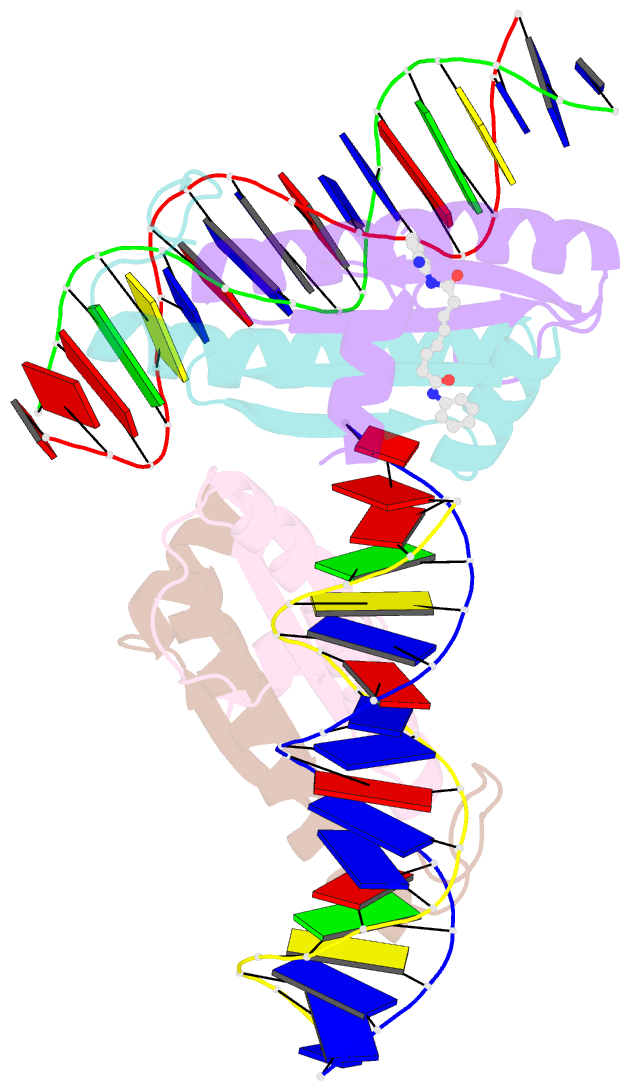Summary information and primary citation
- PDB-id
- 3mu6; SNAP-derived features in text and JSON formats;
DNAproDB
- Class
- DNA binding protein-DNA
- Method
- X-ray (2.434 Å)
- Summary
- Inhibiting the binding of class iia histone deacetylases to myocyte enhancer factor-2 by small molecules
- Reference
- Jayathilaka N, Han A, Gaffney KJ, Dey R, Jarusiewicz JA, Noridomi K, Philips MA, Lei X, He J, Ye J, Gao T, Petasis NA, Chen L (2012): "Inhibition of the function of class IIa HDACs by blocking their interaction with MEF2." Nucleic Acids Res., 40, 5378-5388. doi: 10.1093/nar/gks189.
- Abstract
- Enzymes that modify the epigenetic status of cells provide attractive targets for therapy in various diseases. The therapeutic development of epigenetic modulators, however, has been largely limited to direct targeting of catalytic active site conserved across multiple members of an enzyme family, which complicates mechanistic studies and drug development. Class IIa histone deacetylases (HDACs) are a group of epigenetic enzymes that depends on interaction with Myocyte Enhancer Factor-2 (MEF2) for their recruitment to specific genomic loci. Targeting this interaction presents an alternative approach to inhibiting this class of HDACs. We have used structural and functional approaches to identify and characterize a group of small molecules that indirectly target class IIa HDACs by blocking their interaction with MEF2 on DNA.Weused X-ray crystallography and (19)F NMRto show that these compounds directly bind to MEF2. We have also shown that the small molecules blocked the recruitment of class IIa HDACs to MEF2-targeted genes to enhance the expression of those targets. These compounds can be used as tools to study MEF2 and class IIa HDACs in vivo and as leads for drug development.





